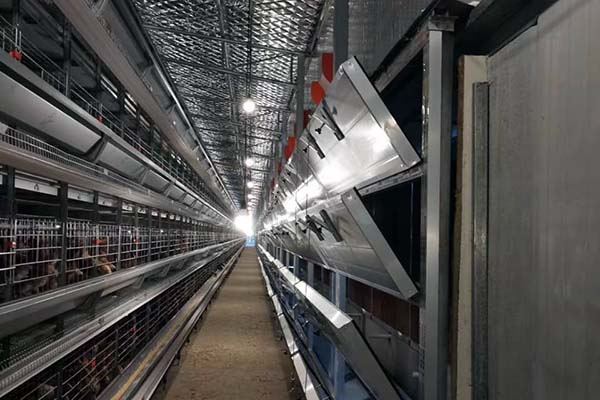Uganda Chicken Farms: Exploring the Advantages of Automated Chicken Farm Breeding
Time : 2025-04-25
When it comes to poultry farming in Uganda, the chicken industry has seen significant growth and development in recent years. One of the most revolutionary changes that have reshaped the sector is the introduction of automated chicken farm breeding systems. In this article, we’ll dive into the advantages of implementing such technology in Ugandan chicken farms.
What is Automated Chicken Farm Breeding?
Automated chicken farm breeding refers to the use of advanced technology to manage the breeding process of chickens. This includes monitoring the health and growth of the chickens, optimizing their environment, and ensuring their overall well-being. By using automated systems, chicken farmers can achieve better productivity and efficiency.
1. Improved Health and Reduced Mortality
One of the most significant advantages of automated chicken farm breeding is the improved health of the chickens. These systems allow farmers to monitor the health of their chickens closely, ensuring that any potential issues are addressed immediately. This reduces the chances of outbreaks and, in turn, the mortality rate.
Automated systems can track various health indicators, such as body temperature, heart rate, and breathing patterns. By monitoring these metrics, farmers can make informed decisions about their chickens’ care, such as adjusting feeding schedules or providing medical attention when needed.
2. Enhanced Productivity
Automated chicken farm breeding systems can significantly increase productivity in Uganda’s chicken farms. These systems help farmers manage their flock more efficiently, leading to higher production rates and better profits.
One of the key features of automated breeding systems is the ability to track and manage egg production. By providing the right environment, nutrition, and care, chickens can produce more eggs, which translates into higher income for the farmer.
3. Improved Living Conditions
Automated systems ensure that chickens are living in optimal conditions. These systems manage temperature, humidity, and lighting, providing a comfortable environment for the chickens to grow and thrive.
In addition to the environmental benefits, automated systems also help reduce stress on the chickens. By minimizing disturbances in their living space, chickens are less likely to exhibit aggressive behavior or experience stress-related health issues.
4. Time and Labor Savings
Manual monitoring and management of a chicken farm can be time-consuming and labor-intensive. Automated systems help reduce the need for manual labor by automating various tasks, such as feeding, cleaning, and health monitoring.
By freeing up time and labor, farmers can focus on other critical aspects of their business, such as marketing and expansion. This can lead to overall growth and success in the chicken farming industry.
5. Reduced Feed Waste
Automated feeding systems ensure that chickens receive the right amount of feed at the right time. By optimizing feed distribution, these systems can reduce feed waste, leading to cost savings and a more sustainable operation.
Reducing feed waste also has a positive environmental impact, as it helps minimize the carbon footprint associated with poultry farming.
6. Enhanced Data Analysis
Automated systems collect and analyze large amounts of data regarding the chicken flock’s health, growth, and performance. This data can be invaluable for farmers, allowing them to make informed decisions about their farm’s operations.
By leveraging this data, farmers can identify trends, spot potential problems early on, and implement proactive measures to maintain a healthy, productive flock.
How to Implement Automated Chicken Farm Breeding in Uganda
Implementing automated chicken farm breeding systems in Uganda requires a significant investment. However, the advantages of these systems make them worth the initial cost. Here are a few tips for successful implementation:
1. Research and Plan: Understand the various automated systems available in the market and choose the one that best suits your farm’s needs. Plan the installation process carefully, considering the layout and infrastructure requirements.
2. Training and Support: Ensure that your staff is adequately trained to operate the new system. Consider seeking support from the manufacturer or a professional installation team to ensure smooth implementation.
3. Maintenance and Upgrades: Regular maintenance is crucial for the proper functioning of the automated system. Stay informed about software upgrades and keep the system updated to ensure optimal performance.
4. Invest in Energy Efficiency: Choose automated systems that are energy-efficient to reduce operational costs.
Conclusion
The advantages of automated chicken farm breeding in Uganda are numerous. By investing in these systems, chicken farmers can improve their flock’s health, increase productivity, save time and labor, reduce feed waste, and make data-driven decisions. With the continuous development of technology, the future of poultry farming in Uganda looks promising, and automated breeding systems will play a crucial role in its success.












